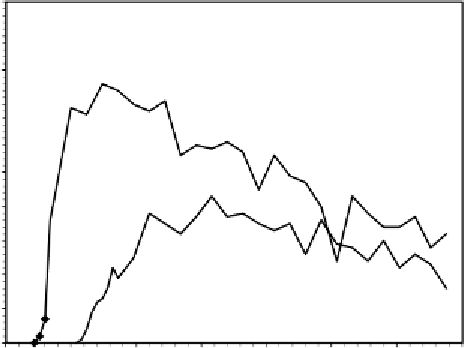Information Technology Reference
In-Depth Information
f
max
= 250; the population size and the evolutionary time were increased, re-
spectively, to 50 and 100 as this problem is slightly more difficult than the
function finding one.
In all the experiments, the function set F = {+, -, *, /} and the terminal set
T
consisted only of the independent variable which was represented by
a
,
giving T = {a}; genetic modification was introduced using a mutation rate of
0.03, an IS and RIS transposition rates of 0.1 with a set of three transposons
of lengths 1, 2, and 3, and two-point and one-point recombination rates of
0.3; in multigenic systems, gene recombination and gene transposition were
also used as sources of genetic modification, both at rates of 0.1 and the
linking was made by addition; as usual, the selection was made by roulette-
wheel sampling coupled with simple elitism and the success rate was evalu-
ated over 100 independent runs.
12.4.1 Genetic Neutrality in Unigenic Systems
The importance of genetic neutrality in unigenic systems can be easily analyzed
in GEP by increasing the gene length (Figure 12.11). After finding the most
compact organization that allows the discovery of a perfect, extremely
100
90
FF
SI
80
70
60
50
40
30
20
10
0
0
25
50
75
100
125
150
175
Chromosome length
Figure 12.11.
Variation of success rate with chromosome length for the function
finding (FF) and sequence induction (SI) problems. The success rate was evalu-
ated over 100 independent runs.














































